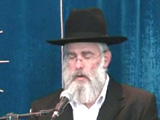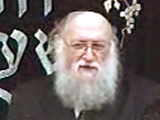Beit Midrash
- Sections
- Chemdat Yamim
- P'ninat Mishpat
An agreement made in public (with three members of the community present) does not even need a kinyan to make it binding (Mordechai, Bava Metzia). The Netivot (333) asks why this concept is not found broadly and reasons that it applies only regarding matters of mitzvot. The Mordechai is discussing a Torah teacher, and the Rama (Shut 50) applies it to the appointment of a community rabbi. We can similarly apply it to one who is writing a sefer Torah on behalf of a chevra. While the Mordechai mentions the involvement of the seven leaders of the community, it appears that their involvement is not a necessity in this regard. In any case, since we are discussing an association within the community, it is likely that its gabbaim have the status of the seven leaders of the community.
Another reason not to allow the switching of sofrim is that the Shach (Yoreh Deah 280:9) rules that if there is a need to redo part of a sefer Torah, efforts should be made to have the original sofer do it because a sefer Torah with different handwritings is less respectable. How then can the gabbaim willingly initiate a change which the Shach considers to be regrettable?
The main point, though, is that in general, once a worker starts a set job, he cannot be removed without due cause. The new gabbaim are bound by the commitments of the previous ones. Additionally, the sofer continued writing during the tenure of the second set of gabbaim. One should not claim that since the unit discussed was a yeri’ah, they can discontinue his employment between yeri’ot, because the normal unit for a sefer Torah is a whole sefer (see Shach ibid.). Yeriot were mentioned in the context of providing partial compensation to the sofer without having to wait until the completion of the whole sefer.
Regarding the complaint that the sofer used patches, in violation of instructions, on one level we can say that since the sofer presented many yeri’ot to the chevra and no one had complained, they accepted the quality of his work. It is admittedly not clear if we should assume they relinquished their right to complain when they received them without complaint or if the lack of protest is significant only from the time they started using it. However, since the sofer is willing to replace the yeri’ot that have patches, this complaint is not grounds for his removal.

P'ninat Mishpat (802)
Various Rabbis
297 - Disqualifying the Sale of Public Property
298 - Switching the Sofer in the Midst
299 - Competition Between the Licensed and the Not Licensed
Load More

P'ninat Mishpat: A Seller with Questionable Rights to the Property – part I
based on ruling 84062 of the Eretz Hemdah-Gazit Rabbinical Courts
Beit Din Eretz Hemda - Gazit | Cheshvan 5786

P'ninat Mishpat: Rent of an Apartment Without a Protected Room
based on ruling 84036 of the Eretz Hemdah-Gazit Rabbinical Courts
Beit Din Eretz Hemda - Gazit | Iyar 5784

P'ninat Mishpat: Unsuccessful Transfer of Yeshiva – part II
based on ruling 82138 of the Eretz Hemdah-Gazit Rabbinical Courts
Beit Din Eretz Hemda - Gazit | Adar 5784





















